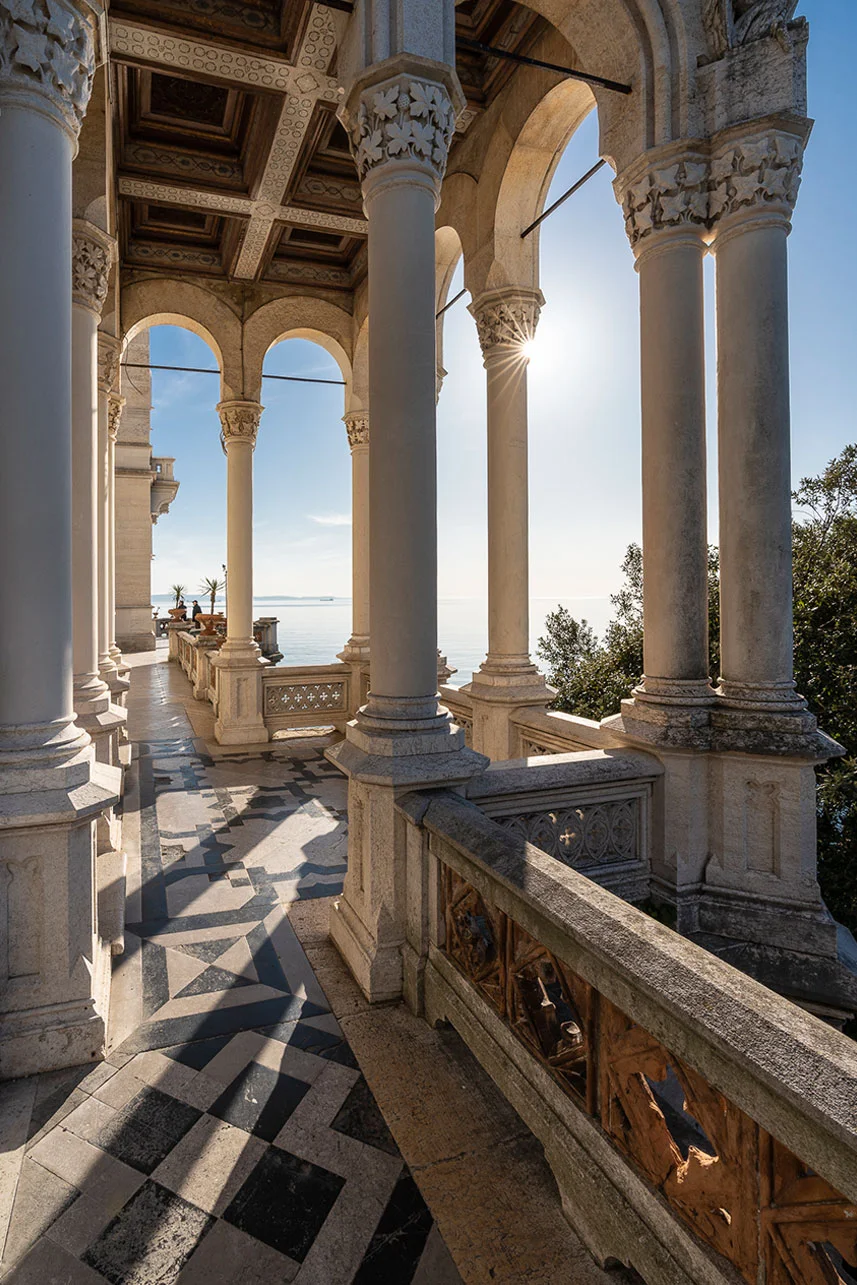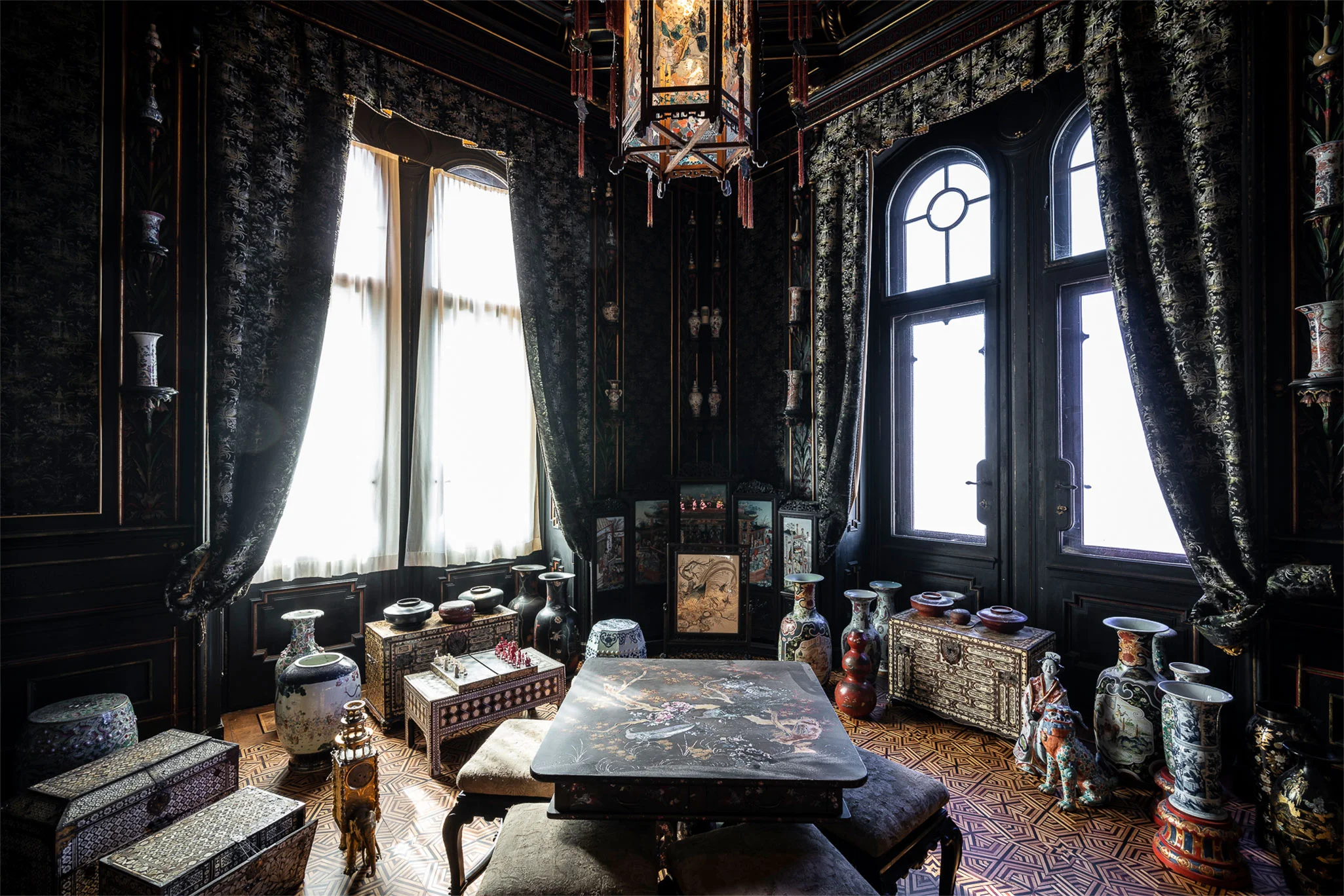
Location: Room IX – Bedroom
This console table/desk combines components of varied provenance from different eras, as the legs and some of the decorations on the sides and front are from the mid-1800s. Made of walnut wood decorated by carved plants, flowers, and volutes, an X-shaped support connects each of the legs. The hoof-like feet were inspired by furniture from the 1700s.
The undulating shape of the top was also quite common in the 1700s; here it is complete with a hinged leaf that conceals four inner compartments. Both faces of the leaf are decorated by still-life scenes made using the intarsia inlay technique, with leaves and flowers that frame writing tools, scrolls and books. Originally part of a different desk, the leaf has been turned upside-down on this console, as is evidenced by the perspective of the subjects and the latch visible on the inside, masked by a painting.
Smaller inlay panels that probably came from the same table as the leaf are found around the central decoration and along the strip supporting the top. The inlay work depicts views of cities with archaeological ruins and both civic and religious buildings. Their fine craftsmanship gives them the look of paintings.
The production of writing cabinet/desks decorated with inlay work originated in Germany in the late 1500s and was quite popular through the 1700s. Highly valued for their quality, it is quite possible that the inlay work on such writing desks (called stipos) was reused on furniture made centuries later, which is probably the case for this desk.





Recent Comments